Have you ever tried a home-grown version of something and realized it utterly destroys your whole concept of how that food tastes?
If you’ve had a sun-warmed red-ripe garden tomato or some golden-yolked free range farm eggs, you know what I mean. There’s a richness to foods that aren’t factory produced, shipped for miles or grown with chemicals in poor soil.
Homegrown-and-ground cayenne pepper is one of those foods. The flavor is simply incomparable. Yes, making your own takes a little work, but the results are worth every minute.
Here’s how we make ground red pepper at Econopocalypse Ranch.
Step 1: Grow and Harvest Your Own Peppers
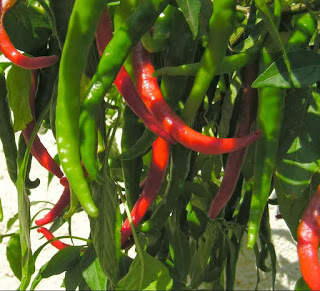 I’ve got a survival plant profile on cayenne peppers here. They’re easy to grow and quite prolific. If you live in a frost-free area, you can grow them year-round and the bushes will produce for years. If, like I do, you live in an area that freezes, it’s worth digging up plants from the garden and transplanting them to pots for the winter. They’ll just keep on going, even in a sunny room or a greenhouse.
I’ve got a survival plant profile on cayenne peppers here. They’re easy to grow and quite prolific. If you live in a frost-free area, you can grow them year-round and the bushes will produce for years. If, like I do, you live in an area that freezes, it’s worth digging up plants from the garden and transplanting them to pots for the winter. They’ll just keep on going, even in a sunny room or a greenhouse.
Harvesting peppers is easy – the stems break nicely and you can gather quite a few in a couple of minutes. Just be careful not to snap any branches on your plants or knock off peppers that are still developing. If you do, you can use those green ones in your sauces and dry pepper – they just don’t have the same, sweet flavor the fully red peppers do.
Harvesting your own peppers allows you to wait for that perfect moment when they hit the high note of atomic redness. Watch for it!
Step 2: Dry Your Peppers
We’ve all seen images of chili peppers hanging in strings, and whereas I like that idea, mine tend to get mold issues when I dry them traditionally. We don’t have the arid climate that parts of Mexico has, so you risk spoiling your harvest if you don’t get it dried quickly. I use an inexpensive dehydrator that does a wonderful job. (It’s this one. You could also get a really awesome dehydrator like the Excalibur
, but I haven’t had the need yet. Maybe one day…)
When we dehydrate cayenne peppers, we don’t even bother cutting them up. We just drop them in whole and let them dry overnight on the Nesco’s “vegetable” setting of 135 degrees F.
That gives us this:
Once dried your peppers, there’s only one more step.
Step 3: Grind ’em Up
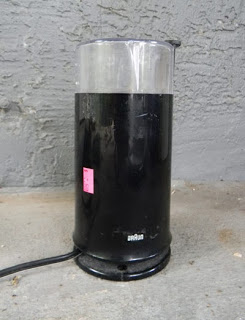 If you want traditional red pepper flakes, you could just crumple your newly dehydrated peppers up with your fingers. They’re really crunchy fresh from the dehydrator and it would be easy enough; however, I really like to go all the way and grind them fine.
If you want traditional red pepper flakes, you could just crumple your newly dehydrated peppers up with your fingers. They’re really crunchy fresh from the dehydrator and it would be easy enough; however, I really like to go all the way and grind them fine.To do that, you need another tool: a cheap coffee grinder.
I have a little Braun grinder. These aren’t normally cheap. Mine came from a local thrift store where it was priced at a steep $3.50. Fortunately, pink tags were half-off that day so I got it for a more reasonable $1.75 (plus tax).
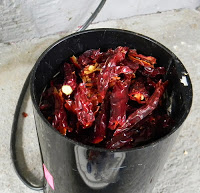 Clean your grinder out well with a damp cloth, then crunch a bunch of peppers into the top. I always like to overload things, just to see how they handle it, but your approach may differ.
Clean your grinder out well with a damp cloth, then crunch a bunch of peppers into the top. I always like to overload things, just to see how they handle it, but your approach may differ.
Pop on the top, push the button and the fun begins. It doesn’t take long at all to grind up cayenne peppers into an amazing orange-red dust. I tilt the grinder a few times, tap it, zip it on and off a few times and run it again, just to make sure I don’t have any pepper left un-ground.
WARNING: When you open your grinder, hold your breath!
Powdered pepper is mean stuff. My wife insists I do this particular process outside. She doesn’t like all the weeping and coughing it induces in the children. Or her.
(I pretend that I like the burning sensation, but I really don’t. Hopefully she doesn’t read this post.)
Once you’ve ground up your pepper, make sure you put it in an airtight (or close to it) container. I like ball canning jars. They’re not only easy-to-use, they’re also beautiful.
Once you try this, you’re never going to go back to the dead brown, spicy-without-sweetness flavor of store-bought cayenne pepper. I’ve hooked multiple friends and family members on the taste of home-grown red pepper, and now it’s become a popular gift at the holidays. (I’m really going to have to grow more peppers… the demand is getting ridiculous.)
A little in chili is superb… a sprinkling in cheese dip is magnificent… a touch in a stir fry is marvelous… and a teaspoon in your curry is life-changing.
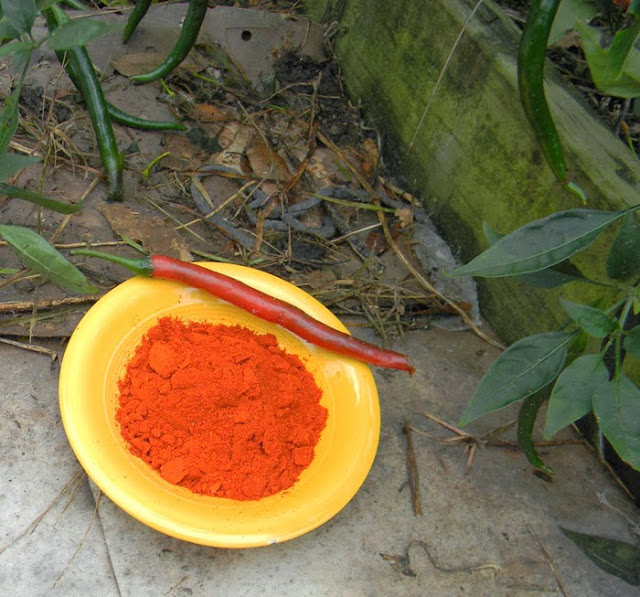 |
| Photo by Daisy Goodman |
You can follow this same process with all kinds of pepper, including non-spicy paprika peppers or even nuclear-powered habeneros (I’ve done it with habeneros – it’s AWESOME!).
Give it a try at home and let me know what you think. Unless you don’t like spicy foods… and if that’s the case, why in the world did you read this far?

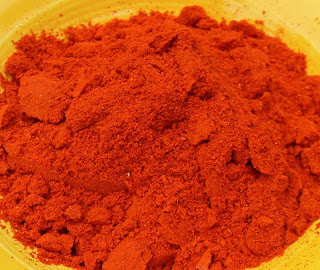

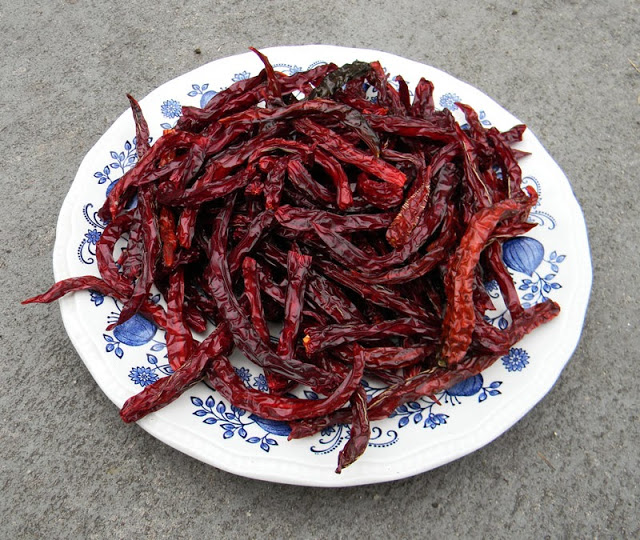
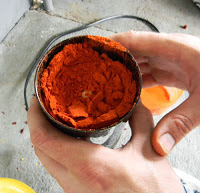
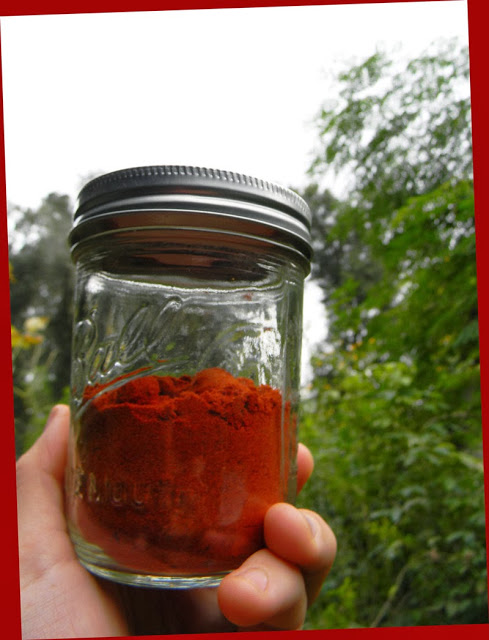
13 comments
OK, I gotta save this one. Only, do you have a collection of grinders? How do you keep flavors from grinding one thing out of the next thing you grind?
Tell Daisy I love her photo.
"How do you keep flavors from grinding one thing out of the next thing you grind?"
That's a good question. I wipe out the interior of my grinder (usually remembering to unplug it first), then grind a little rice in it a few times. I only have one grinder and it's dedicated to spices. Coffee + cayenne = hot drink in the morning.
Oh… and I'll tell Daisy. :)
I have some dried cayenne peppers sitting in the basement from the CSA. And a coffee grinder that probably smells like cardamom. Thanks to this post, I now have some inspiration and motivation. And thanks for the rice trick too!
Do it! The flavor is superb.
Thanks for the info- just what I was looking for.
Over the last several years we haven't had the room for much of a garden. Missing it, I decided to create a raised platform to support a group of containers I had got on the cheap. One of the first thing we looked at when planting was peppers, (various types) for two reasons: 1. we like stuffing & freezing them for future meals and 2. they tend to be expensive in the grocery stores.
With the Bell and Banana peppers, we also grow Cayenne's, specifically for cooking. I've never had the need to research how best to dry & grind them until now- as food preservation is becoming more important with every passing season. Thanks again!!
You're very welcome.
Peppers are definitely a high-value crop, plus they're amazing for you and work well even in containers.
Keep on prepping!
David,
This sounds wonderful. I use a lot of cayenne powder in my barbecue rub, and it’s the super-secret ingredient in my wife’s sausage gravy. I’ll have to find some seed and perhaps I can still get a crop in this year.
You have plenty of time – I usually grow a big crop of them in the fall.
So the seed just get grind up with the peppers? What is the best way to store it all year, on the shelf, freezer or fridg?
Hi Tom,
Yes – I grind it seeds and all. It’s delicious! We store ours in a sealed mason jar in the spice cabinet. It keeps for years, but probably loses some flavor over time.
[…] pepper. Kashmiro peppers, which are long and spicy, are used to make Kashmiri chili powder. A dried red bell pepper grind can be used to make paprika, which is much sweeter than other chilis. Smoky paprika and chili […]
I have orange Jalapeno seeds coming. I want to dry them and maybe add a bit of hickory or oak smokiness. Trying to make Chipolte powder. Any suggestions?
We made a decent version by smoking homegrown jalapenos in the smoker, then dehydrating them.
Comments are closed.